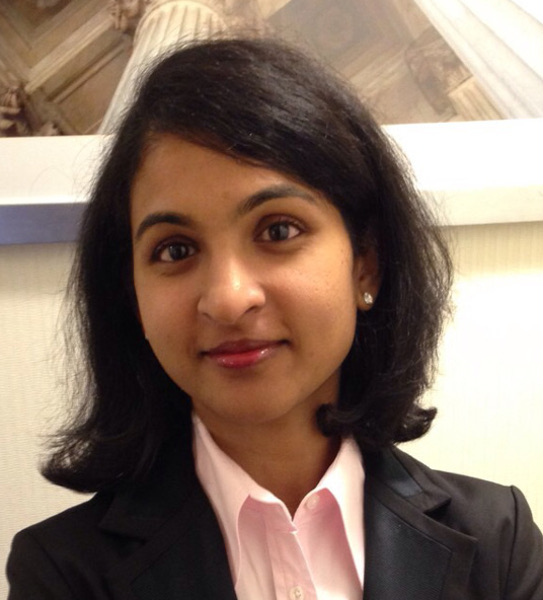Stone Fellowship Recipients
Congratulations to the 2016 Stone Fellows!
Sailu Bondalapati
Sailu Bondalapati’s Reflection Essay
I am Sailu Bondalapati, currently a medical student on Leave of absence for research in Ophthalmology at The Moran Eye Center, University of Utah. I am truly grateful to receive the Kevin Stone MD’81 award which afforded me to join Ambati’s laboratory. The experience was a meaningful milestone and an excellent opportunity for professional growth and for the coming up residency match.
The Moran Eye Center is the largest facility of its kind in the Intermountain West and provides leading-edge care for the full range of vision and eye conditions, including adult and pediatric retina, glaucoma, cataracts, cornea, neuro-ophthalmology, ophthalmic plastic surgery, pediatric ophthalmology, external eye diseases, and emergency services. The Moran Eye Center also conducts medical eye camps and trains doctors, nurses, and technicians throughout the developing world and provides charity care locally at the Fourth street clinic, Maliheh clinic and Navajo reservation in Southern Utah. One more interesting aspect of the Moran Eye Center is a dedicated facility for basic science research in ophthalmology.
Dr. Ambati devotes a significant portion of his time to research endeavors, investigating the molecular mechanisms of angiogenesis, the growth of new blood vessels, in the cornea and retina. I led a basic science research study in his lab to find a potential treatment for Central Retinal Artery Occlusion. I was also one of the co-investigators on a couple of other studies including neurotrophic keratopathy and macular degeneration. I also got to participate in the outreach activities such as Maliheh clinic on the first Wednesday, Navajo reservation in Southern Utah to screen underserved communities for diabetes and glaucoma and perform cataracts and pterygium surgeries on the second weekend and Fourth street clinic for homeless and uninsured on the last Tuesday.
This experience gave me an opportunity to gain great insight into local and global health interventions and a variety of ocular manifestations in underserved communities that will be transformational to the diverse culture in the state of North Carolina. It also equipped me with hands on experience in a contrasting medical community and system. This experience made me a unique applicant, strengthened my resume and prepared me to well enough to face the challenges of my future training.
This scholarship substantially reduced the financial burden on my family and allowed me to devote a greater amount of time for research. My two children were able to go to school, day care and extracurricular activities while I am on my way to become a physician. I truly appreciate your generous donation to my education and training.
Thank you.
Congratulations to the 2015 Stone Fellows!
Dillon Barron Alison Halpern
Aaren Hunt Laura Malone
Dillon Barron’s (MS4) Reflection Essay
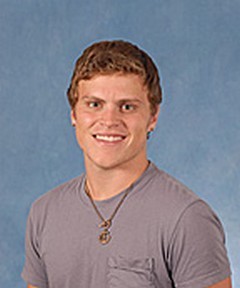 “A patient has the right to medical and nursing services without discrimination based upon race, color, religion, sex, sexual preference, national origin or source of payment” –Patient’s Rights, NC Administrative Code
“A patient has the right to medical and nursing services without discrimination based upon race, color, religion, sex, sexual preference, national origin or source of payment” –Patient’s Rights, NC Administrative Code
This past year, I was fortunate enough to be the recipient of the 2015 Stone Fellowship as a medical student at the University of North Carolina at Chapel Hill. Through this fellowship, I was given the opportunity to travel to San Francisco to pursue training in LGBT medical care (specifically in the Emergency Department) at the University of California at San Francisco. San Francisco contains one of the largest lesbian, gay, and transgender communities in our country. Since the emergence of HIV/AIDS some 30 years ago, San Francisco has maintained a strong commitment to serving the health needs of queer individuals and serves as a role model for progressive healthcare, not just for the LGBT, for all varieties of disenfranchised people. The ‘Healthy San Francisco’ program, which was created in 2007, provides health insurance for all the uninsured in San Francisco. In 2010, UCSF became the first clinic in the world to offer treatment to persons at all stages of HIV disease to keep them healthy, knowing that it had the secondary benefit of reducing transmission. Ward 86, a primary care clinic within UCSF, became the first clinic in the world in 1986 to specialize in the treatment of HIV/AIDS patients. As the emergence of HIV/AIDS passes its 30th anniversary, one can see the massive impact clinics like Ward 86 have had on stemming the impact of the HIV pandemic. To paraphrase one of the Professors I worked with while at UCSF, the life expectancey of HIV+ people was once 18 months – now we tell them to look forward to retirement. It goes without saying that my time at UCSF allowed me an unparalleled experience for learning how to care for LGBT people. Working in the Emergency room there, one encountered transgender, LGB, and HIV+ individuals on a daily, if not hourly, basis. The professors there had decades of experience in caring for these individuals, and taught me the unique challenges in caring for their specific health needs. While there, I was able to work with patients and clinicians from Ward 86, an international leader in caring for HIV+ people. We were given lectures on the care of transgender and LGBT patients. I was also able to experience first-hand the tangible benefits of working in a community where everyone has health insurance. Though much progress has been made in eliminating heterosexism within healthcare, it is clear that much work still needs to be done. When I began medical school, I wrote in my application, ““I feel that my perspective as a gay man will avail me in my future as a physician by allowing me to be a voice for the unique health concerns of LGBT people.” Though much of my path within healthcare has deviated since then, my commitment to serving the queer community has not changed, and I remain committed to my goal of “being a voice for the unique healthcare needs of LGBT people.” I hope to not only focus on the treatment of their health, but also to be a voice and advocate for eliminating LGBT healthcare disparities. The lessons I learned while at UCSF in the Department of Emergency Medicine have inspired me to continue with this goal, and will make me a more qualified in compassionate clinician when caring for queer patients.
Alison Halpern’s (MS4) Reflection Essay
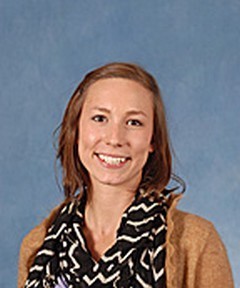 The Stone Fellowship was absolutely instrumental to my returning to Lilongwe, Malawi, which has been a dream of mine since I left. I spent a month in Lilongwe in the summer after my first year of medical school with UNC Project Malawi’s Surgical Intiative- a program that has helped to establish a surgical residency program and a research collaborative within a country with a vast shortage of surgeons. This experience cemented the foundation of my desire to work in underserved areas, and to have a focus of my career as global medicine. This experience was also instrumental to my ultimate decision to become a surgeon.
The Stone Fellowship was absolutely instrumental to my returning to Lilongwe, Malawi, which has been a dream of mine since I left. I spent a month in Lilongwe in the summer after my first year of medical school with UNC Project Malawi’s Surgical Intiative- a program that has helped to establish a surgical residency program and a research collaborative within a country with a vast shortage of surgeons. This experience cemented the foundation of my desire to work in underserved areas, and to have a focus of my career as global medicine. This experience was also instrumental to my ultimate decision to become a surgeon.
While in Lilongwe, I worked at Kumuzu Central Hospital (KCH), which is a tertiary hospital in the capital city, serving the central and northern regions of Malawi. Here I participated in various different types of surgical care- oncologic surgery, orthopedic surgery, pediatric surgery, trauma surgery, burn surgery, and critical care medicine. As a fourth year student returning to this environment, I was better able to understand the complexities of medical and surgical care in a resource-poor setting. I again was struck by the ramifications of a country that has less than 20 surgeons for millions of people, including the understanding that in places like Malawi it is not uncommon to die of conditions such as appendicitis.
My first week I detailed some of these thoughts in a post on my blog…It was a beautiful first week. We operated on Thursday, which was our first day in the hospital. Unfortunately, we had a very sick infant patient with a condition which was not survivable given his delayed presentation to the hospital and the operating theater. Seeing patients here can be frustrating as you wonder what systems can be improved to streamline and expedite care to acutely ill patients- with surgery several hours earlier this infant may have lived.
The remainder of OR schedule mirrored a busy general surgery service in the US- mastectomies, breast biopsies, hernia repairs, amputations, emergency bowel surgeries. All of the surgeries here are open- meaning the area to be operated on is opened with a sizable incision, an operation is performed with the surgeon visualizing his/her field through that incision, the surgery is performed, and the incision is sewn up at the end. This is in comparison to laparoscopic surgery which is incredibly common in the US (where multiple small incisions are made on the patient’s body and long cameras and tools are placed through those incisions). Apparently there is a laparoscopic surgery tower here, donated by some foreign aid service, which allows the video feed to show up on a monitor and allows gas to pump through one of the port sites which essentially blows up the abdomen (our word is insufflates), thus separating the abdominal wall from the abdominal contents so the surgeon can see. However, there is no readily available gas for the machine and I don’t think it plugs into the wall correctly so it’s not in use.
My experience in Lilongwe, Malawi taught me many things. Sure, I brushed up on anatomy and drug dosing (which, by the way, you actually have to know by heart because online resources are not so readily available there) and clinical care, but I also had formative experiences that will change who I am as a person and a physician. Some of my thoughts and observations:
- The more time that I spend in other countries or cultures, the more I believe that as humans we are so much more similar than different.
- People are genuinely good and kind. I was greeted by the same OR staff and KCH surgery residents who were here last time. Most remembered me! And they seemed happy that I had returned.
- We spend a lot of money in the United States on care that simply does not exist in the developing world. Being in such a resource poor area certainly made me think about the huge amount of money that is spent on care in the last 6 months of life in the US, and what could be done with that quantity of money in the developing world. Vaccines? Cancer screening programs? Training more doctors?
- Healthcare infrastructure seems to be where help is needed the most. The central pharmacy has no computer accounting system and between this and the widespread corruption within the Ministry of Health many supplies go missing or may have never existed.
- This is really rewarding. Being a doctor is such a privilege.
- Mentoring someone can change their life. I went back to Lilongwe, Malawi with Dr. Anthony Charles, UNC Trauma Surgeon. I had also accompanied him on my first trip there. Without his guidance I know this early start to my career would have been different. I want to work in Academic Surgery and I know that I will interact with students in my career. I need to remember what he and my other mentors have done for me and to also treat students with enthusiasm, respect, and support.
I send my most heartfelt thanks to the Kevin R. Stone Travel Fellowship. Without it, my continued participation in the UNC Malawi Surgical Initiative would not have been possible. I think that global health projects and rotations give such a meaningful perspective on what it means to be a doctor and I applaud this contribution to the UNC School of Medicine.
Aaren Hunt’s (MS4) Reflection Essay
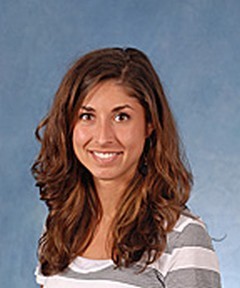 Our years in medical school are filled with endless hours of knowledge acquisition through lectures, team based learning, clinical rotations, and reading as much as humanly possible. My month spent in the Great Smoky Mountains National Park completing the Wilderness Medicine Society Student Elective was learning of a very different type. The outdoors was our classroom and the hands-on teaching style was unlike anything I have experienced to date. There were various components to the course and at the end of the day I feel that I returned with a wealth of knowledge that will positively impact my future medical practice as an Emergency Medicine physician.
Our years in medical school are filled with endless hours of knowledge acquisition through lectures, team based learning, clinical rotations, and reading as much as humanly possible. My month spent in the Great Smoky Mountains National Park completing the Wilderness Medicine Society Student Elective was learning of a very different type. The outdoors was our classroom and the hands-on teaching style was unlike anything I have experienced to date. There were various components to the course and at the end of the day I feel that I returned with a wealth of knowledge that will positively impact my future medical practice as an Emergency Medicine physician.
WMS knew they had our undivided attention since we were housed in a cabin with no cellphone service or internet connection. Our days would often start at 7am and we would have lectures, demonstrations, group activities, and field operations well into the night. Lectures, while normally the bane of my existence, were given by world renowned outdoor enthusiasts, physicians, and other medical professionals. The lessons were fascinating and I was so humbled that these individuals would travel from far and wide to the middle of nowhere Tennessee for us.
Some of my favorite lectures were on topics I hadn’t even considered as part of wilderness medicine before, such as the “Space Medicine” lecture given by a medical advisor to NASA. Dr. Edward Otten said very little by way of introduction when he arrived to give our space medicine and toxinology lectures. However, it became clear by the end of his time with us that we were within arm’s reach of a very accomplished and important man. This same scenario occurred several more times: we would receive a lecture by Dr. Such-and-such, I would eventually deduce that they are the expert or leader in their field, and would become frustrated that I hadn’t realized sooner. This led to what I consider my contribution to the betterment of the wilderness medicine elective. I proposed that we each research one of the remaining lecturers and act as liaison to that person when they arrived at camp. In addition, we’d be able to give a formal introduction for each guest speaker to the class before their lectures. I think it both shows respect and appreciation for our speakers as well as gave the class a better understanding of just how fortunate we were to be learning from the best of the best. I could talk about the lecturers’ backgrounds and their topics for several more pages without even touching the tip of the iceberg.
One of the unexpected benefits I experienced from this elective was meeting female physicians who are participating in fields and activities that I hadn’t considered for myself in the past. I whitewater rafted with a physician who works for the US Women’s Olympic downhill skiing team and loves every minute of her job. She travels all over the world with the team and has formed amazing relationships with these world class athletes. Another physician volunteers her time as race physician for ultra-marathons globally in exchange for travel accommodations. She taught us all about the medical emergencies that can arise during these types of endurance sports and how to be prepared to respond.
During the month each student was required to give a presentation to the class on a topic of their choice. What began as a check box activity turned into something much, much more. Our class composition was fascinatingly diverse. With international participants from Australia, Denmark, and Canada, we learned so much about the culture of medicine and practices all over the world. Also, there were students studying both osteopathic and allopathic medicine as well as a nursing student. All different specialties were represented: Emergency Medicine, Family Medicine, Neurology, General Surgery, Pediatrics and probably a few I’m forgetting. We also had many graduating residents who were about to start their journey as attendings and shared their knowledge and experience with the group. I learned daily from my peers. They taught me about shark attacks in Australia, ice climbing in Canada, how to pick the perfect knife for your expedition, how to make traps and snares for animals, defensive moves if being attacked by another human being, what to do when attacked by both grizzly and brown bears (there are very important differences) and so much more. I was able to give a basic course on fly fishing as well as demonstrate how to make an effective tourniquet in the wild. There was rarely a moment where someone wasn’t showing the group some new knot or teaching us the Danish word for cheeseburger. Having the opportunity to spend a month with these talented and driven medical professionals was easily my favorite part of the elective.
Another goal of the student course was to become proficient in Search and Rescue (SAR) technique and eventually eligible to receive our Wilderness First Responder (WFR) certification. Our instructors for these activities divided us up into groups and picked victims for each scenario. They then proceeded to expertly moulage victims and deposit them in precarious locations throughout the park. Teams received the “rescue call” with minimal detail on their prospective patients and began their SAR scenario. These activities were grueling both physically and mentally. Extracting unstable patients from an austere environment and making life saving decisions regarding stabilization and transport is not an easy task. It is just as challenging for the “patients” who are asked to lie on cold ground or be partially submerged in water etc. and accurately depict the medical condition from which they are suffering. When it was my turn to be the victim, I found myself lying face down on a steep slope, wedged between two trees, with a branch sticking out of my back demonstrating that I had been impaled. The scenario was further complicated by our weather condition of -2⁰ F and the beginning of a steady snowfall. After I had been extracted and we were debriefing, my colleagues accurately identified that I had been impaled, had a hemopneumothorax, and began to decompensate during the transport. They also astutely picked up that I had become hypothermic during the scenario with blue lips and extremities, violent shaking, and decreased awareness. The latter symptoms required no acting on my part. I feel very confident that I can organize and direct a SAR as well as be a reliable team member if called upon to help in any of these situations. The relationships we forged during these long days and frigid nights will last a lifetime and the knowledge we obtained will be invaluable if ever faced with similar conditions.
The Wilderness Medicine Society has succeeded in creating a singularly amazing student elective with so much complexity and rich opportunity for learning, networking, and forming lasting relationships within the medical community. I cannot advocate enough for the wonderful product they’ve created and the value it has in the training of a budding physician. I feel so fortunate to have been selected for the Kevin R. Stone Travel Fellowship as it made all of these experiences possible. Time and again I have found myself indebted to wonderful individuals such as Dr. Stone who choose to invest in young physicians. As I near the end of my medical school training and adopt greater responsibility of patient care, I take each of my mentors and benefactors with me. You all have developed within me the wonderful sense of responsibility for going above and beyond for my patients, team members, and future learners. I hope to be able to impact the medical community as positively in the future. Thank you again!
Lauren Malone’s (MS4) Reflection Essay
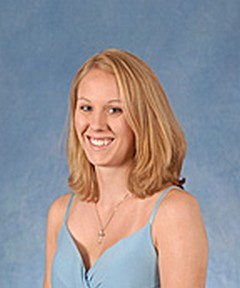 In January, I arranged a rotation to do research at Johns Hopkins University in the Motion Analysis Laboratory. I will be starting residency in Child Neurology this July, so I’m specifically interested in neurological processes in pediatric populations. The Motion Analysis Laboratory studies human movement, specifically how the brain controls walking. This is an important topic for the field of neurology and neuroscience because after a stroke patients typically walk with an asymmetric gait (i.e. a limp) from hemiparesis. It is not only adults, but also children that at times walk with a limp. For example, a child might have walking difficulties from cerebral palsy or intractable seizures that requires a hemispherectomy (removal of half of the cerebral cortex). Understanding more about the plasticity of the brain in children is an important consideration because they do not always display the same learning mechanisms as adults since their brains are still maturing. Given my interest in neuroscience and my future residency training in child neurology, I feel that researching the ways people learn movements is of great importance to the neurology field and can help physicians, physical therapists and other medical professionals in North Carolina and beyond work with patients who have gait abnormalities.
In January, I arranged a rotation to do research at Johns Hopkins University in the Motion Analysis Laboratory. I will be starting residency in Child Neurology this July, so I’m specifically interested in neurological processes in pediatric populations. The Motion Analysis Laboratory studies human movement, specifically how the brain controls walking. This is an important topic for the field of neurology and neuroscience because after a stroke patients typically walk with an asymmetric gait (i.e. a limp) from hemiparesis. It is not only adults, but also children that at times walk with a limp. For example, a child might have walking difficulties from cerebral palsy or intractable seizures that requires a hemispherectomy (removal of half of the cerebral cortex). Understanding more about the plasticity of the brain in children is an important consideration because they do not always display the same learning mechanisms as adults since their brains are still maturing. Given my interest in neuroscience and my future residency training in child neurology, I feel that researching the ways people learn movements is of great importance to the neurology field and can help physicians, physical therapists and other medical professionals in North Carolina and beyond work with patients who have gait abnormalities.
To study how people learned a new walking pattern, I used a customized split-belt treadmill – a treadmill that has two separate belts (one for each leg) that can move at different speeds. Both children and adults are able to learn a new walking pattern when we make one leg move two or even three times faster than the other. As unbelievable as it sounds, most people have no difficulty walking in this novel condition. However, the exciting thing about this therapy is that in stroke patients, we can temporarily remove their asymmetric gait (their “limp”) using split-belt training. Now, the lab focuses more on how we can optimize training techniques to eliminate patients’ limps permanently.
During my month in the Motion Analysis Laboratory, I focused on investigating how we can get children to learn and remember new walking patterns more effectively. The experiment went very well and we got interesting results that will hopefully be published in the near future; however, the thing that struck me that month was not the experimental design or the significant results, but the interactions with the children during my study. My participants on the treadmill were children ages 6-8 years old, and I was surprised how excited they were. They wanted to understand how the sensors monitored their walking pattern or why walking with one leg going faster than the other made them so tired. Of course, some got bored during the 45 minute walking experiment – asking “can I do a different exercise now?” or deciding to start taking giant steps while walking to make it more fun, but the vast majority of children were very interested in participating and liked that they were helping other people through research. I was surprised when I received a number of emails from parents thanking me for allowing their children to participate in the study and be exposed to research. I was grateful to them for taking the time and energy to bring their children in to help me conduct a study, so it was odd to think that these families were thanking me instead. Overall, working with children was enjoyable and rewarding and I look forward to starting a residency program where I will get to see them every day. Additionally, I was reminded of that fact that it is important for us as physicians and researchers to expose children to the opportunities that exist for them in the future; that medicine and research can be exciting and that along the way, we can help people as well.
